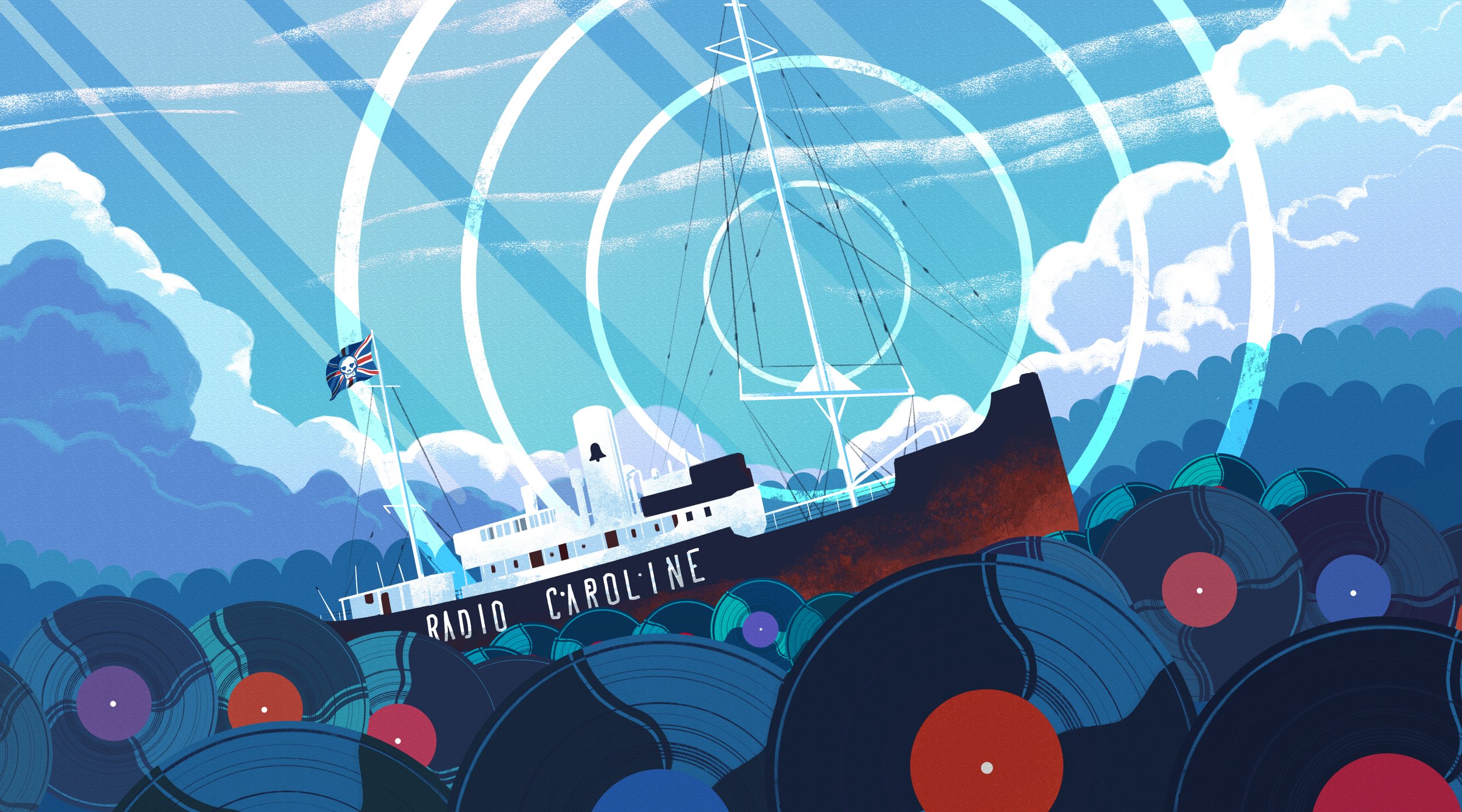In the 1960s, Bob Moog and Don Buchla built synthesizers that changed the world. But by the early 80s, they faced a new challenger who threatened to bring it all crumbling down: the digital synthesizer. To defeat this opponent, they’d have to recruit a new ally… and maybe even join forces. Featuring Bob’s daughter Michelle Moog-Koussa, Don’s collaborator Ami Radunskaya, and journalist Ryan Gaston.
Synth War
In the United States, the East Coast and West Coast have rivalries across food, sports, music and more. But there’s another rivalry that’s less well known, but just as important. This standoff created sounds that were unlike anything that had been heard before. It redefined what a musical instrument could be. And it changed the sound of pop music forever. Featuring journalist Ryan Gaston and composer David Rosenboom.
1-900-20K-HRTZ
In the late 80s and early 90s, 900 numbers were all the rage. For a couple bucks a minute, you could call and hear from Hulk Hogan and Freddy Kreuger, have a psychic predict your future, and even find true love. In this episode, we dig into the wild world of 900 numbers, and explore why they came about, what made them so appealing, and why they ultimately faded away. Featuring Doug Fraser of the Curious State podcast, 900 number experts Bob Bentz and David Wood, and a surprise guest…
Tokyo Rose
In World War II, the Japanese military operated a propaganda station called Radio Tokyo. Along with jazz music, the station featured several English-speaking female announcers, who became collectively known as Tokyo Rose. But who was Tokyo Rose? And was she really the treacherous villain that the US government made her out to be? This story comes from the History Daily podcast.
Shock Horror (A)
There’s a certain musical phrase that you’ve probably heard hundreds of times. It’s used to emphasize dramatic moments in movies, cartoons, commercials and musicals, most often as a gag. But while this little melody is everywhere today, the question is: Where did it come from? In this episode, we investigate the mysterious origins of a famous 3-note sting. Featuring Sound Historian Patrick Feaster and Composer Dick Walter.
Mind the Gap
The voices of subway and train announcements are deeply ingrained in peoples’ lives. Many of us hear them every day, for years on end. And yet, hardly anyone knows who those voices belong to. In this episode, we uncover the human stories behind two of the most iconic transit systems in the world: the New York City Subway, and the London Tube. Featuring NYC Subway announcer Charlie Pellett and Tube announcer Elinor Hamilton.
Hidden Hitmakers
The names of pop and rock stars are known by millions of people around the world, but the people who actually write their music often stay in the shadows. In this episode, we peel back the curtain on the songwriters behind some of the biggest hits of the last forty years, and find out how this unseen part of the industry really works. Along the way, we’ll get the inside scoop about working with KISS, Bon Jovi, Ricky Martin, Snoop Dogg, Puff Daddy, and more. Featuring songwriter Desmond Child and rapper/songwriter Gizzle.
Pirate Radio
In the 1960s, the BBC had a vise grip on British radio, and rarely played the pop and rock music that was all the rage. So a group of rebellious radio DJs decided to give the people what they wanted, and started broadcasting popular music from boats stationed in international waters. Soon enough, these young DJs became national superstars… until the British government decided it was time to sink these pirates once and for all. This story comes from the History This Week podcast.








